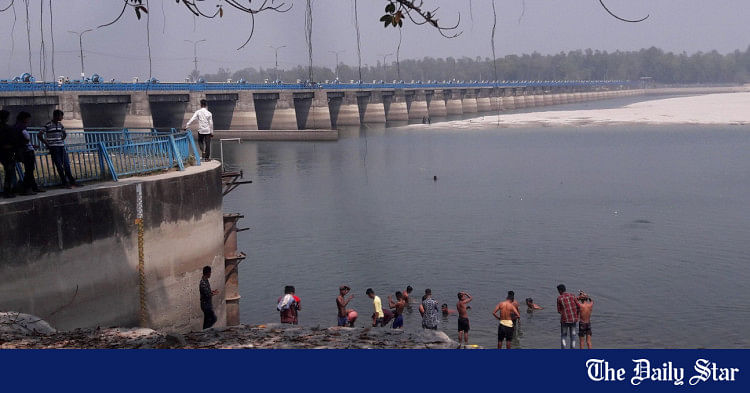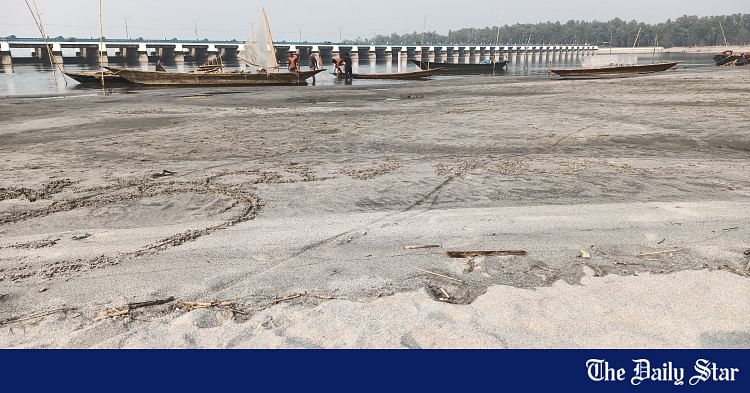- 3,012
- 1,490
- Copy to clipboard
- Moderator
- #41

What about decommissioning Farakka Barrage?
The Farakka Barrage on the mighty river Ganges was commissioned on April 21, 1975 on a trial basis. And with its commissioning, a large section of people of Bangladesh became mistrustful of India, which had strongly supported the independence war of Bangladesh and made huge sacrifices. The main rethefinancialexpress.com.bd
What about decommissioning Farakka Barrage?
MIR MOSTAFIZUR RAHAMAN
Published :
Jun 26, 2024 21:49
Updated :
Jun 26, 2024 21:49
View attachment 6627
The Farakka Barrage on the mighty river Ganges was commissioned on April 21, 1975 on a trial basis. And with its commissioning, a large section of people of Bangladesh became mistrustful of India, which had strongly supported the independence war of Bangladesh and made huge sacrifices.
The main reason for mistrust is the adverse effect of Farakka Barrage on the economy of Bangladesh that is largely dependent on agriculture for its sustenance. But the irony is that after 20 years of its commissioning, people for whom the barrage was constructed, are now raising voice against it. Located in West Bengal, India, the Farakka Barrage is roughly 16.5km away from the Bangladesh border.
The purpose of the barrage was to ensure navigability of the Kolkata Port by flushing out silt by discharging water at the rate of 1800 cubic meter per second from the Hooghly River. After commissioning the project, Indian experts said that it was observed that the diverted water flow from the Farakka Barrage was not enough for the purpose.Eventually, it was found that the water diverted from the barrage is less than 10 per cent of the water of the Ganges river available at Farakka.
Against this backdrop, the chief minister of the West Bengal, Mamara Banarjee has publicly questioned the necessity of the Farakka Barrage. A couple of days ago, she wrote a letter to Indian Prime Minister Narendra Modi wherein she had drawn a vivid picture of the negative impact of the Farakka Barrage on the people and their livelihoods in West Bengal.
"In fact, the genesis of construction of Farakka Barrage project is the disconnection of Bhagirathi from the Ganges. As part of this project, a feeder canal has been constructed to provide at least 40000 cusec for proper functioning of the Kolkata port. It is very pertinent to mention that the flow of silt into Hooghly has also reduced over the years after the barrage was constructed" the West Bengal chief minister wrote in her letter.
"This has accentuated erosion by the rivers and the areas both in the upstream and downstream of the barrage have faced serious loss of life and property including public infrastructure such as schools, hospitals; health centres, power lines in the past. Lakhs of people have been displaced from their habitation rendering them homeless and also leading to their loss of livelihood. The reduced silt load in Hooghly has impeded the nourishment of Sundarban delta" she explained.
People of Bangladesh believe that Farakka Barrage, built across the Ganges is the key reason for drying up of many rivers in their country, including the Padma near Rajshahi. Experts said the barrage is not a problem for Bangladesh alone, it also poses a problem for the people who live in its vicinity in India. In fact, Farrakka project is a vivid example of how development projects have been undertaken without thinking about the lives of people living near the river. The rivers of Bangladesh are dying. The sweet water content inside the rivers has diminished, and there has been a steady rise in salinity.
Built to revive the Kolkata port, it is now blamed for reducing water flow, increasing salinity and drying up the waters around the Sundarbans.
Mamata Banerjee raised the issue in reference to the recent Hasina-Modi meeting, which decided to renew the Ganges Water Sharing treaty, which is to expire in 2026. She made it clear that without her consent the proposed renewal would not be acceptable. And it is more or less clear that she may not accept a deal without a solution of the crisis triggered by the Farakka Barrage.
Under the prevailing circumstances, questions are being raised by many whether decommissioning of the Farakka Barrage could be a solution to the problem. One will have to wait and see what transpires finally.
Same thing like Teesta, ditto solution.
Build a barrage downstream within fifty miles of Farakka, our side of the border.
Then we will see how many paddy, how many rice. Entire Bihar and WB will be underwater, because (unlike us) their leaders never spend any money on dredging their rivers.
Enough useless talk for fifty years. These people are experts at stalling.






